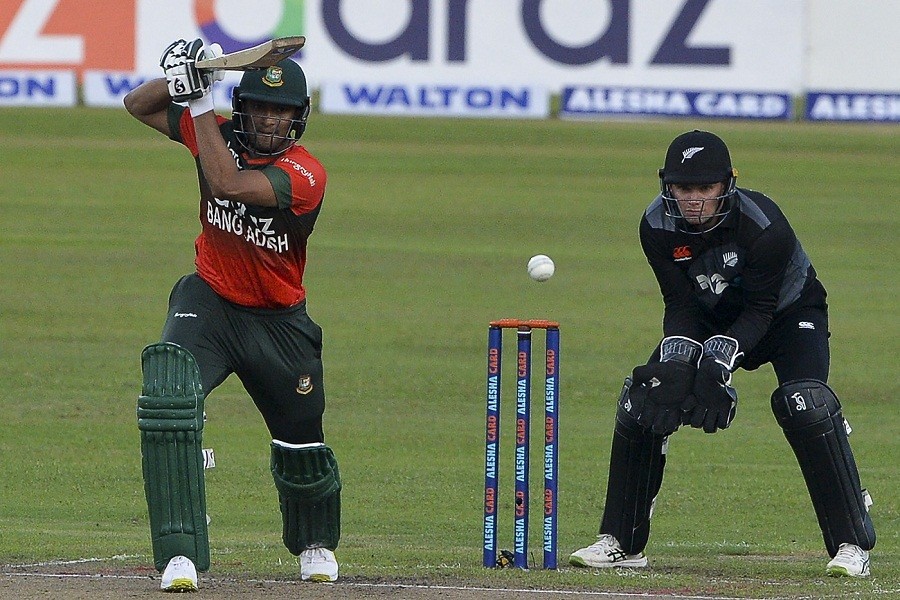
Published :
Updated :

Bangladesh have never been considered as a force to reckon with in the T20 format. In 115 appearances, Bangladesh have managed to win only 43 games at a win-loss (W/L) ratio of 0.614.
Unfortunately, the numbers get worse while chasing – with the latest example being the turmoil against Scotland. Out of 65 such occasions, Bangladesh have secured victory in just 22 matches at a W/L ratio of 0.511.
If the target is 160 runs or more, the stats get terrifying – 5 wins in 37 outings at 0.135 W/L ratio.
Should the target be increased to 180 or more, the W/L ratio is 0.100 with only 2 wins out of 20 opportunities. Only once in seven occasions have Bangladesh been successful in chasing a 200+ total.
These numbers basically sum up Bangladesh’s woes while chasing any total beyond 160. The absence of a power hitter who can clear the fence with sheer brute force and lack of efficiency in rotation of strike by picking up gaps, finding quick singles, and converting ones into twos have been some of the key factors of Bangladesh’s struggle in the T20Is overall – especially while chasing decent totals.
The Super 12 is expected to produce more of such challenges for Bangladesh. Therefore, Bangladesh must not rely solely on luck and had better have their plans set if they want to reach any further than Super 12.
Using the Powerplay
While chasing substantial totals, the top order must make sure that they are capitalizing on the powerplay to the fullest. Cliché thinking of getting set and used to the pace of pitch must be kept aside and positive intent has to be shown right from the word go.
Having said that, it must be kept in mind that positive intent does not refer to throwing the kitchen sink at everything. Rather, always looking for runs by pouncing on the loose balls and pinching singles and doubles in the good ones is the correct approach of ensuring a flying start to the chase.
The onus will be on the opener and No.3 that Bangladesh do not lose more than a wicket and score a minimum of 50 runs in the powerplay.
Gambling with a Pinch Hitter
It is normal for any side to fall behind the required rate despite having a positive intent throughout. Such a circumstance may take place due to the fall of quick wickets or a batter’s struggle to find the meat of the bat.
In that case, sending in Mahedi Hasan as a floater can be an ideal thing to do. His sole responsibility is to score as much as possible using the least possible deliveries without worrying much about his wicket.
Should this move click, the required run rate (RRR) will come down to a manageable range for the rest of the batting lineup.
However, if he fails, this can create added pressure. Having said that, the team has to take this risk since there is no point in sitting in the changeroom and observing the RRR going out of reach.
Batting through the innings
Whoever among the top three manages to get set in the middle, must take the responsibility of batting through the innings. Regardless of how good a surface is for batting, it is always difficult for a new batsman to get going straightaway.
Therefore, while chasing decent scores, having two new batters at the crease at any point of the chase is nothing short of a disaster. Thus, one batter has to be constant till the end allowing others to bat around him.
Maintaining left-right combinations
Bangladesh have three right-handers (Mushfiq, Mahmudullah, Sohan) and two left-handers (Shakib, Afif / Shamim) from No. 3 – 7. Maintaining a left-right combination whenever possible can prove to be effective in both neutralising spin threat to some extent and utilising the short side of the boundary.
All the batters have to maintain a positive mindset whenever they get down in the middle. For a team like Bangladesh, that do not contain power hitters-- an entire team performance-- not just some individual brilliance, is essentially required to get over the line.
The writer is currently studying at the Institute of Business Administration, University of Dhaka (IBA-DU).
tanvir2575@gmail.com


 For all latest news, follow The Financial Express Google News channel.
For all latest news, follow The Financial Express Google News channel.